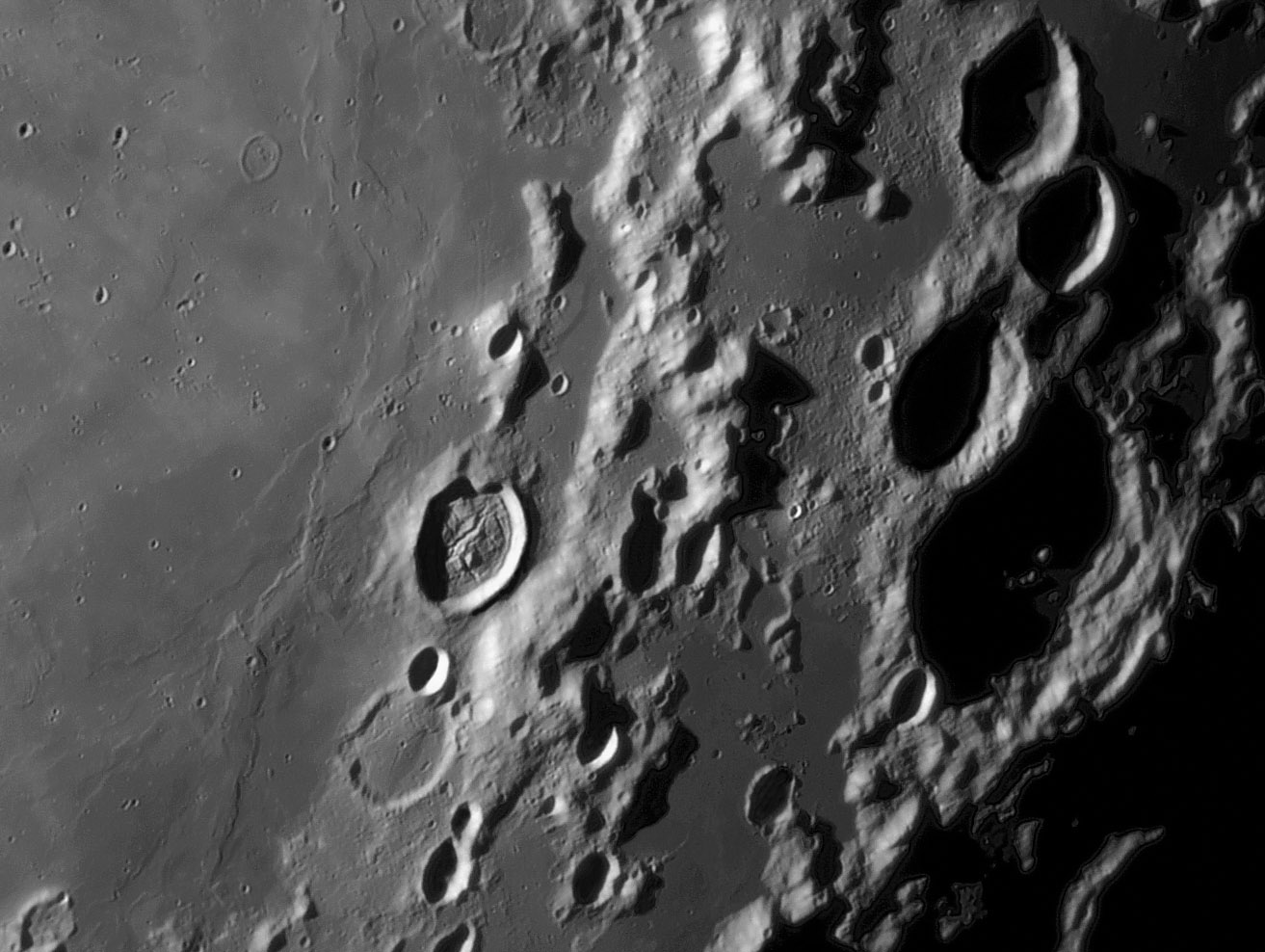November 30, 2008
Pyrenees Perusal

image by Wes Higgins, Tecumseh, Oklahoma
Mare Nectaris is strange - it has almost no evidence for small volcanic features such as rilles and domes. Wes' superb new image of the eastern edge of the mare provides improved resolution but only hints of typical mare features. But first, Bohnenberger, the odd crater left of center with a bright rim. The floor displays the classic fractured dome pattern of a floor-fractured crater. To the south a similar uplift in Bohnenberger A demonstrates that fractures beneath these craters allowed mare lavas to accumulate under them and push up and crack their floors. These two craters are embayed on the west by younger lavas than what they are built on. In fact, the mare ridge just west of Bohnenberger seems to lap up over older lavas adjacent to the crater. Young, almost crater-free, dark mare lavas occur between the Pyrenees Mountains - a scraggle of north-south running hills just east of Bohnenberger - and the shadowed line of large craters near the terminator. These young lavas are in a moat between the Pyrenees basin ring and the next one out that passes through Colombo (whose Stonehenge of central peaks is just visible). Return to Bohnenberger and notice the small bright crater, F, to its north. In the mare just northwest of F there are two very faint parallel rilles about 15 km long. With great enhancement of the image one rille can be imaged to extend northward another 15 km. These are the sort of concentric rilles (as along the western shore of Mare Tranquillitatis) that form when mare-filled basins subside. Nectaris' mare fill is thin (about one km so the subsidence and rille formation must have been slight.
Chuck Wood
Technical Details
09-18-08. 18" Reflector, Infinity 2-1m camera, Registax V4, MAP (89X64), stack of 119 frames.
Related Links
Rükl plate 47 & 58
Yesterday's LPOD: Upheaval Dome: Confirmation of Impact Origin
Tomorrow's LPOD: Highland Wrinkle Ridge
COMMENTS?
Register, Log in, and join in the comments.



